Tarator is a cold soup made with yogurt and cucumbers. This Bulgarian and Albanian dish is perfect for a light meal in the heat of summertime and would be delicious with a slice of crusty bread!
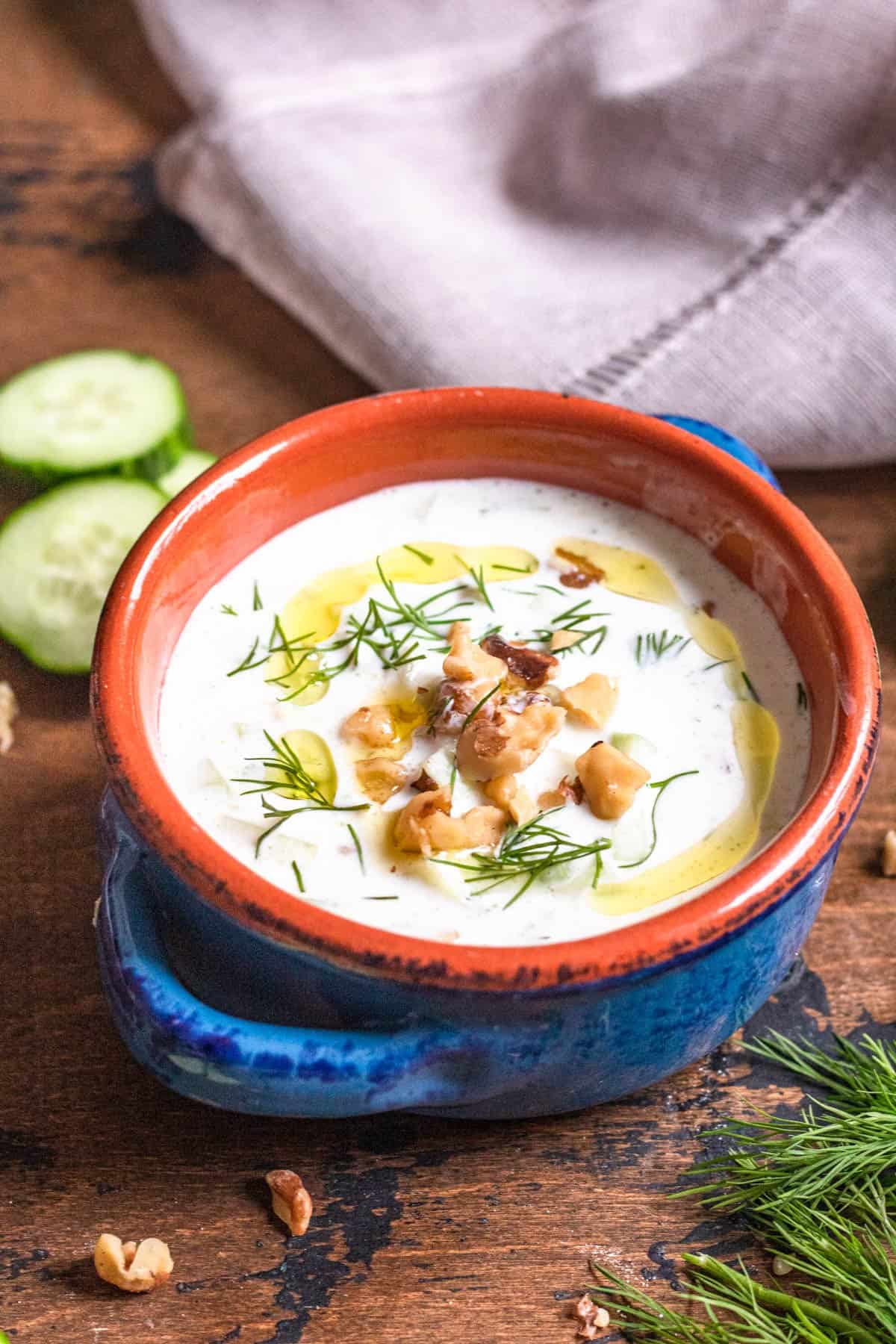
Hello Reader! I try my hardest to research recipes as best as I can before posting to ensure I am representing each culture correctly. If this recipe is from your country and I have made a mistake or you have suggestions for how to make it more authentic, I would love to hear! Please leave a comment below letting me know what should be different, and I will rework the recipe. It is always my intention to pay homage and respect to each cultural dish that I cook. Thanks for reading!
Recipe Origins
It’s so clear by researching Bulgaria that Bulgarians love their yogurt. So obviously I had to try making a recipe with it!
One of the most famous yogurt dishes in Bulgaria is Tarator, a cold cucumber and yogurt soup.
This soup is perfect for a hot day in summer, when the sun is beating down and you want a refreshing, light lunch to cool down with. It would also be perfect served with some crusty bread!
The Albanian recipe for Tarator is similar to the Bulgarian version, but there are some other countries with different variations! The recipe reflected here is the Bulgarian/Albanian version of Tarator!
Why Make this Recipe
- Quick: 5-10 minutes is all you need to throw this soup together. It’s a great last minute addition to a meal!
- Cold Soup: In need of a chilled summer soup to cool you down? This recipe for Tarator is perfectly refreshing and great for those hot summer days!
- “Travel” to Bulgaria: If you’ve ever wanted to try visiting Bulgaria (or have been and want to go back) this is a great way to experience Bulgaria from your home (along with these recipes for Palachinki and Gyuveche)!
Ingredients for Tarator
Here is a visual overview of the ingredients in the recipe. Scroll down to the recipe at the bottom for quantities.
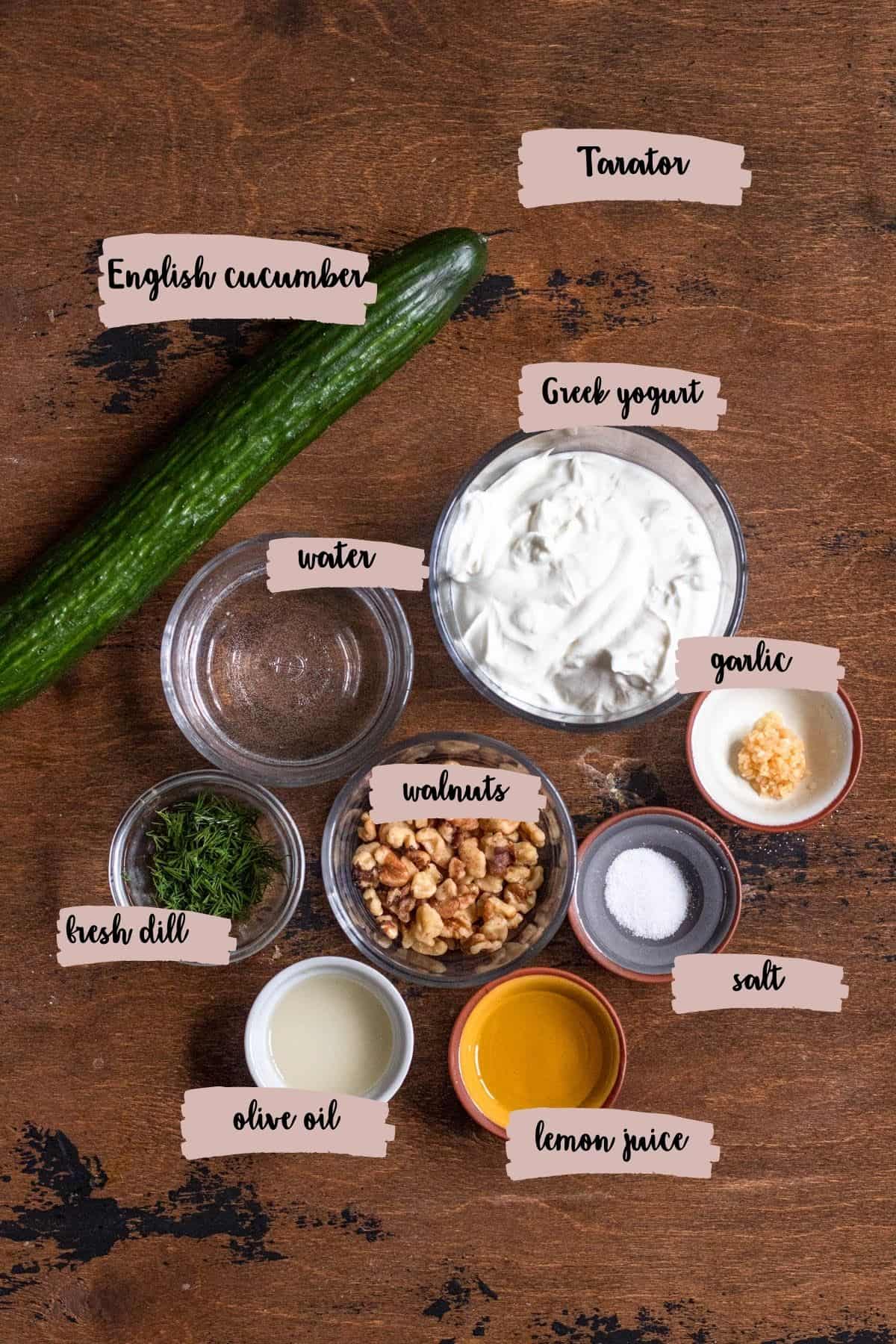
- Cucumber: Use an English cucumber (about ¾ of a large cucumber) if possible as the seeds are smaller and less invasive. If you end up using an American Cucumber, slice the cucumber in half and use a spoon to remove the seeds before dicing and adding to the Tarator. You can peel the cucumber or keep it unpeeled if desired.
- Garlic: Using fresh garlic, minced from garlic cloves, is the best option
- Walnuts: I used roasted walnuts, but you can also use raw walnuts
- Greek Yogurt: Plain, unflavored. I prefer full fat yogurt.
- Dill: Fresh dill makes a huge difference in the flavor of this recipe, but you can use dried dill in a pinch!
- Salt: This recipe was made using sea salt, but not all salt is made the same. If you are using table salt, replace the ½ teaspoon sea salt with ¼ teaspoon salt.
Tools
- Bowl
- Whisk
How to Make this Recipe
Step 1: Start the Soup
Add the finely diced cucumbers into a bowl along with all of the other ingredients except for the water. Stir to combine.
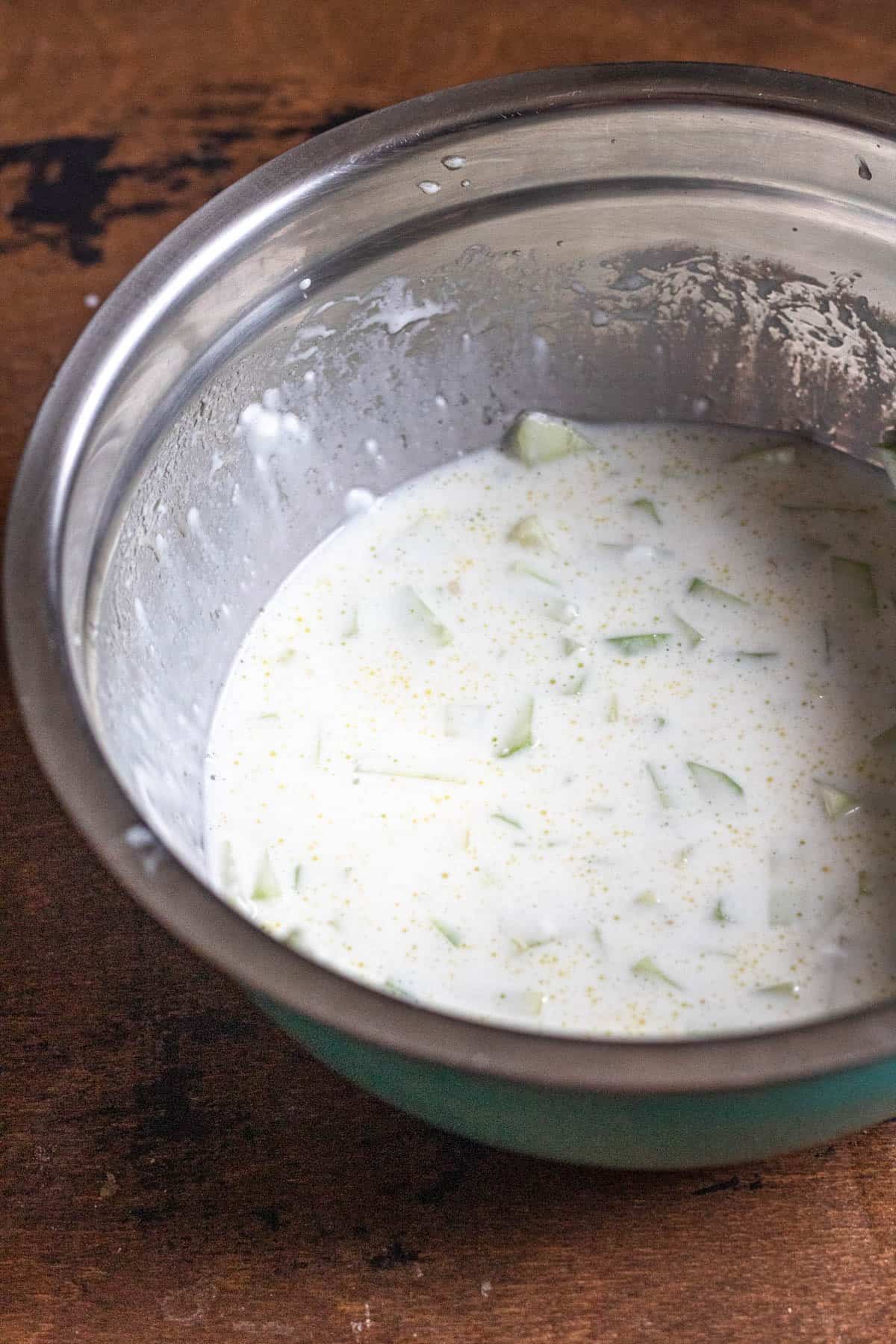
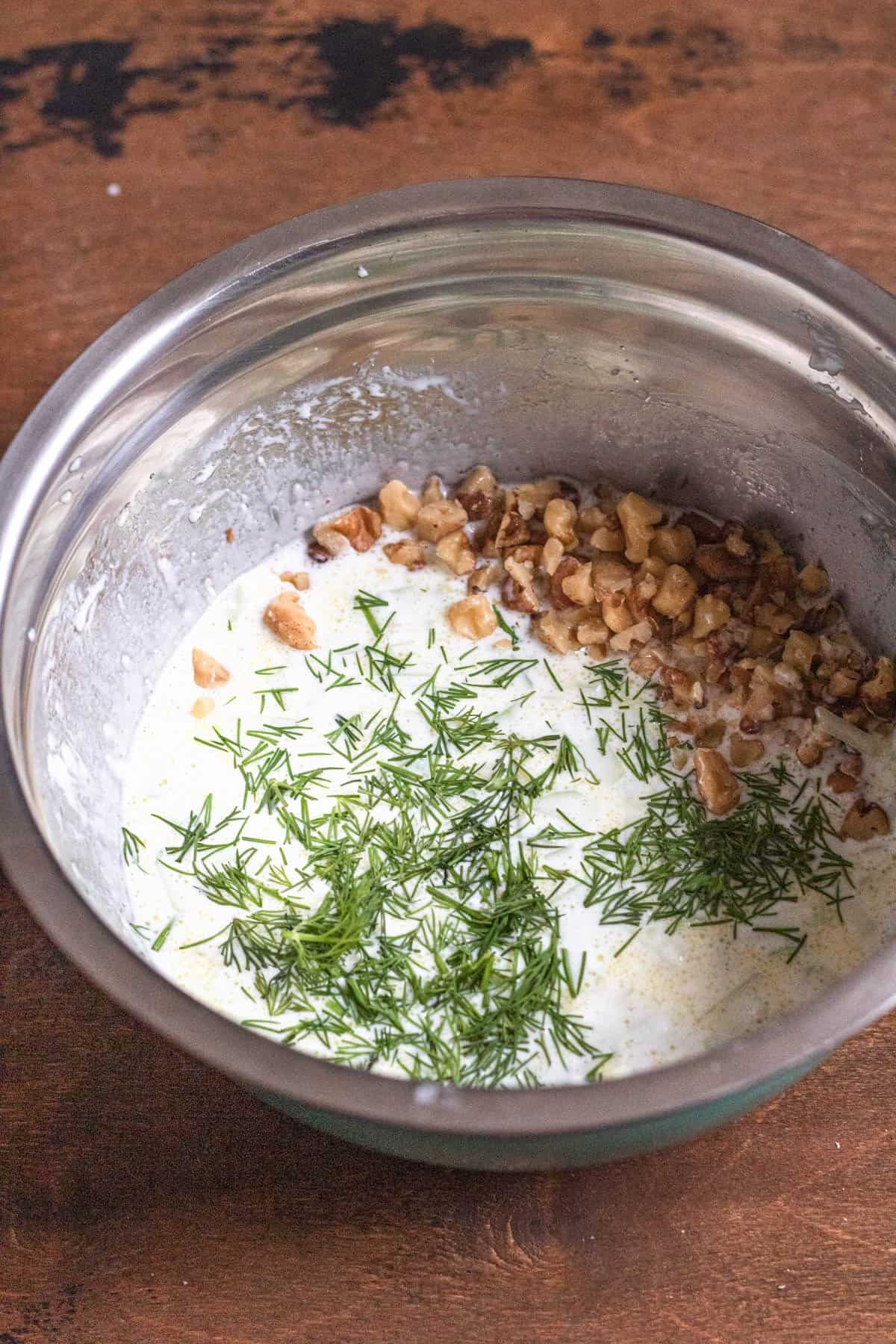
Step 2: Thin it Out
Drizzle the water into the bowl as you whisk. Once the water has thinned out the soup, check the consistency. If you like a thinner soup, you can add another ¼ – ½ cup.
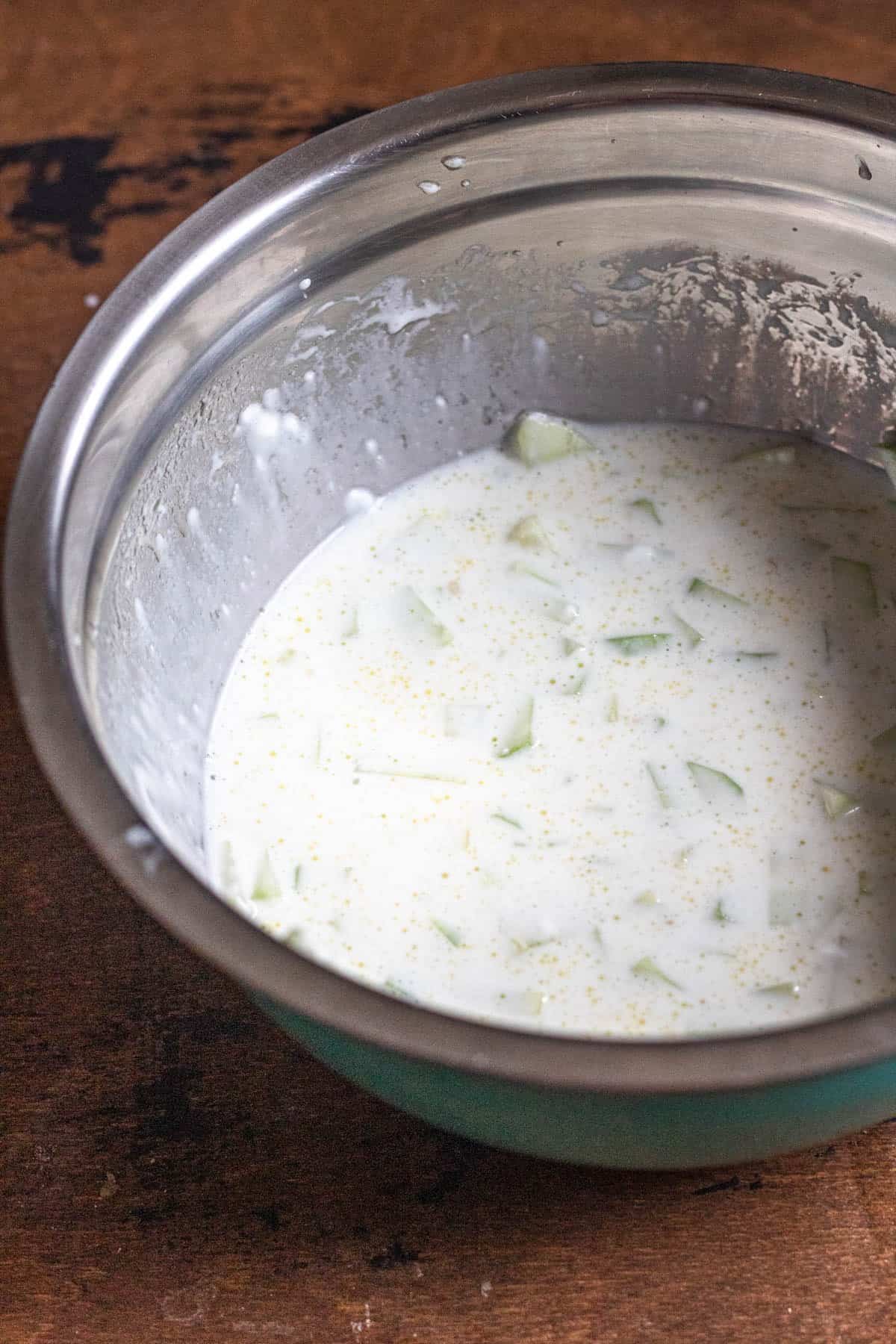
Step 3: Serve
Spoon into bowls and garnish with extra walnuts, olive oil, and dill if desired. Enjoy!
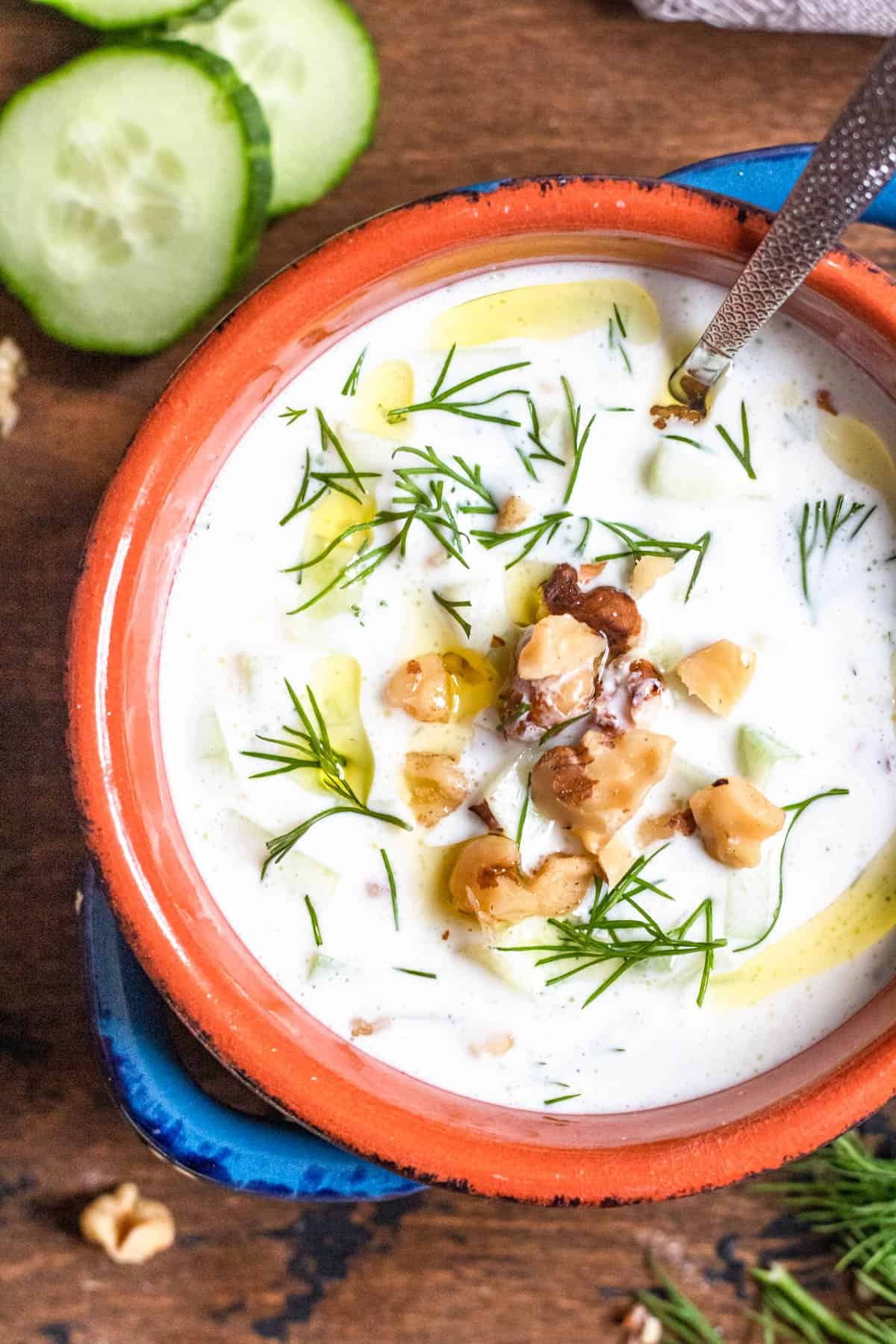
Variations of Tarator
There are some different ways that you can adjust your Tarator soup based on your preferences! Try out these variations:
- Make this recipe as thin or as thick as you want by adjusting the amount of water in the soup.
- Herbs: Mint, parsley, or cilantro would be good flavors to add.
- Different Nuts: This recipe calls for walnuts, but pistachios, almonds, or pine nuts would be good to add different flavors!
- Adjust the Dairy: If you don’t have yogurt, you can use sour cream or kefir.
- Garnishes: Add croutons for some crunch or a sprinkle of paprika for some pretty color.
Expert Tips
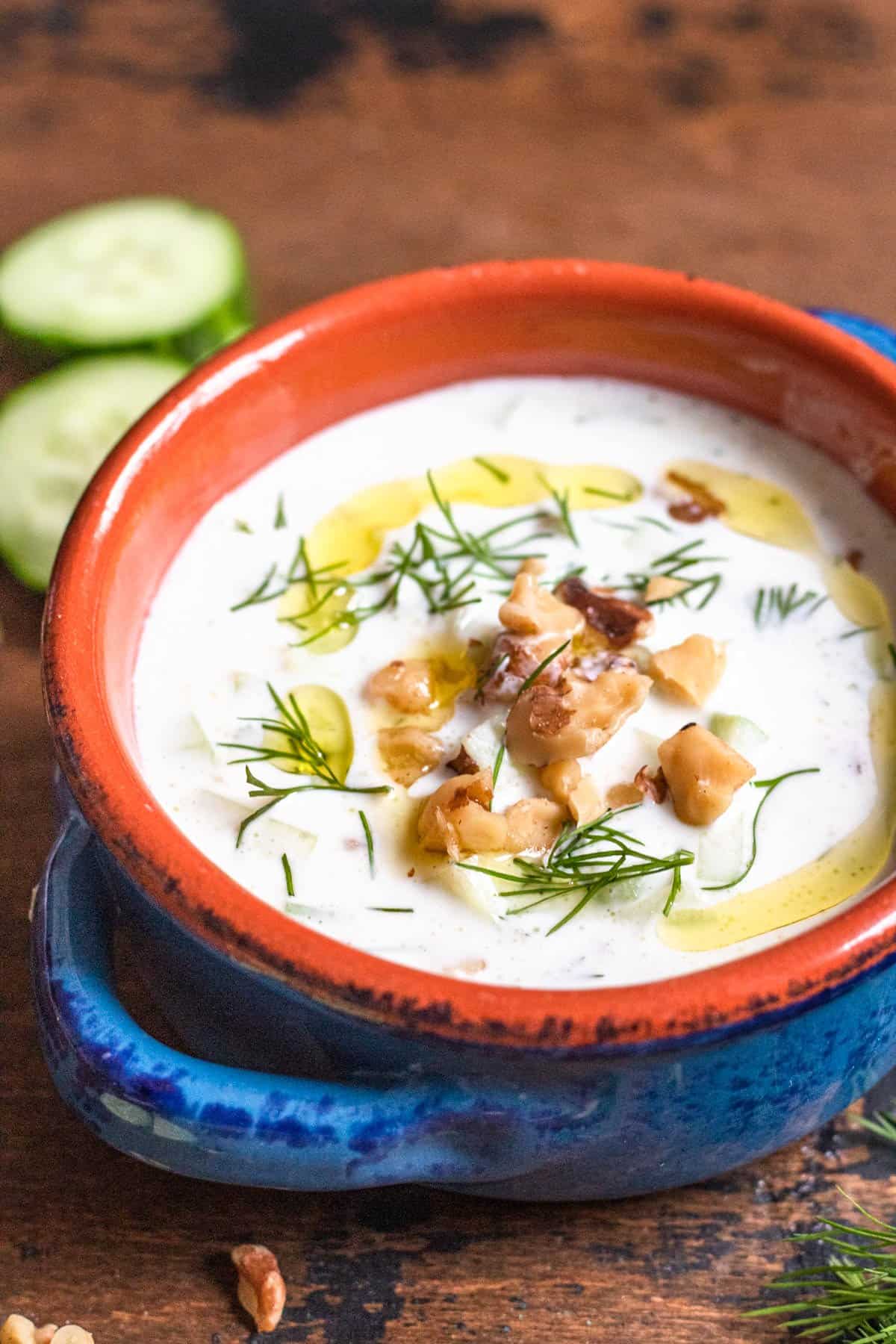
- Serve this as a first course in place of a salad, as a main course, or as a refresher between courses! You can also serve it as a side dish.
- Keep the cucumber unpeeled to add an even better color to the Tarator Soup.
- Make this 30 minutes ahead of time and allow it to chill in the refrigerator for best results.
- You can also use a Mortar and Pestle to assemble this soup if you prefer!
- This is a very easy recipe to make “to taste”. Sample a spoonful before serving and if you think the soup needs more of something, go ahead and add it!
What to Serve with Tarator
Tarator is a great side dish and can be served with almost anything! Here are some ideas of What to Eat with Tarator:
- Salad: Make a simple homemade salad with cucumbers, tomatoes, and lettuce, or add some protein to your salad.
- Crusty Bread: Perfect for scooping up the last few bites of yummy soup!
- Grilled Meat: Grilled chicken, ribs (like this Nyama Choma), grilled lamb or grilled fish.
- Stuffed Vegetables: Try these Instant Pot Stuffed Peppers from Croatia!
Recipe FAQs
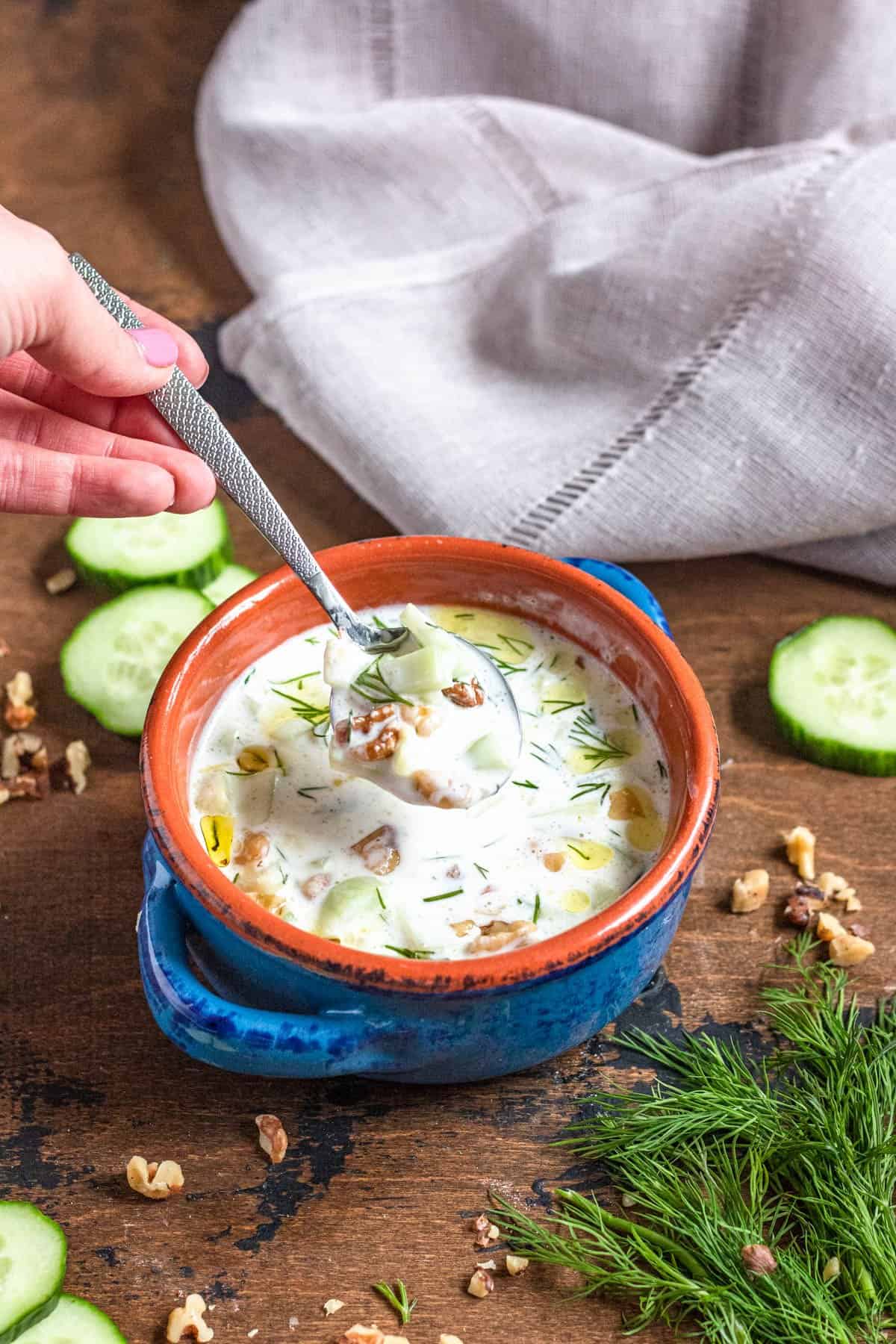
While Tarator is popular in Bulgaria, it is also popular in a few other countries, including Albania.
There is also a Lebanese version of Tarator that includes tahini paste, but this is not that version.
Tarator tastes a lot like watered down tzatziki sauce (that’s pretty much what it is!). The plain yogurt and lemon give it a more bitter taste, while the cucumbers and walnuts add a wonderful level of texture.
The dill is the most prominent flavor, mixed with the yogurt.
You can store your Tarator in the fridge for up to 3 days! Keep it in an airtight container, and make sure to stir it up before serving.
Tarator is a thin soup made with cubed cucumbers and typically topped with walnuts. Tzatziki is a thick spread or dip made with shredded cucumbers and not usually made with walnuts.
Even more confusingly, the phrase “Tarator Sauce” is sometimes used to refer to tzatziki sauce in certain countries. However, in Bulgaria and Albania, the word tarator refers to the soup that is made in this article.
You can definitely make your Tarator in advance, though it would probably be yummiest the same day that you made it. You can also prepare your cucumbers a day in advance if you prefer for a quicker assembly on the day of.
Did you enjoy this recipe for Cold Cucumber Soup? If so, make sure to check out these other recipes I picked out just for you:
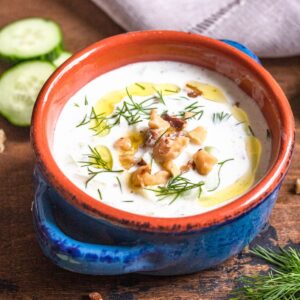
Tarator: Cold Cucumber Yogurt Soup from Bulgaria
Equipment
- Mixing Bowls
- Whisk
- Citrus Juicer
Ingredients
- ¾ large English cucumber, peeled and finely diced
- ¼ cup chopped walnuts
- 1 tbsp olive oil
- 1 tsp garlic, minced
- ½ tsp sea salt
- 1 cup Greek Yogurt, plain
- 1 tbsp lemon juice
- 1 tbsp dill, fresh
- ½ cup water
Instructions
- Add ¾ cup finely diced cucumbers into a bowl along with all of the other ingredients except for the water. Stir to combine.
- Drizzle ½ cup water into the bowl as you whisk. Once the water has thinned out the soup, check the consistency. If you like a thinner soup, you can add another ¼ – ½ cup.
- Spoon into bowls and garnish with extra walnuts, olive oil, and dill if desired. Enjoy!
Notes
- Cucumber: Use an English cucumber (about ¾ of a large cucumber) if possible as the seeds are smaller and less invasive. If you end up using an American Cucumber, slice the cucumber in half and use a spoon to remove the seeds before dicing and adding to the Tarator. You can peel the cucumber or keep it unpeeled if desired.
- Walnuts: I used roasted walnuts, but you can also use raw walnuts
- Greek Yogurt: Plain, unflavored. I prefer full fat yogurt.
- Dill: Fresh dill makes a huge difference in the flavor of this recipe, but you can use dried dill in a pinch!
- Salt: This recipe was made using sea salt, but not all salt is made the same. If you are using table salt, replace the ½ teaspoon sea salt with ¼ teaspoon salt.
- Garlic: Using fresh garlic, minced from garlic cloves, is the best option
- Serve this as a first course in place of a salad, as a main course, or as a refresher between courses! You can also serve it as a side dish.
- Make this 30 minutes ahead of time and allow it to chill in the refrigerator for best results.
- You can also use a Mortar and Pestle to assemble this soup if you prefer!
- This is a very easy recipe to make “to taste”. Sample a spoonful before serving and if you think the soup needs more of something, go ahead and add it!
- Keep the cucumber unpeeled to add an even better color to the Tarator Soup.
Nutrition











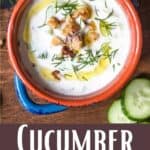



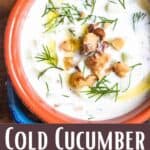

Jerotha B.McCall says
Persian also has this Cold Soup -we eat with Pita Bread – add onion or raisins -opt.
Alexandria Drzazgowski says
Yum raisins in it sounds delicious!
Anastasiya Peterson says
My go-to tarator recipe! So simple but so refreshing and delicious!
Alexandria Drzazgowski says
So happy that you love it, Anastasiya! Thank you for leaving a comment 🙂
JL says
Hallo from Bulgaria!
The main difference of Bulgarian yoghurt is that it is sour and that’s because the specific bacteria. Bulgarian word for yoghurt translates as sour milk. If it’s good you don’t have to add lemon juice. I find other yoghurts bland and tasteless. It makes tarator even more refreshing in the hot summer days. Your recipe is accurate.
The Foreign Fork says
Thank you for the insight JL! So glad to hear that you approve of the recipe! 🙂